Glendale, AZ Pollen and Allergy Report for Summer 2023
Pollen Allergy Trends in Glendale, AZ
When is pollen lowest in Glendale, AZ?

February
Lowest month total PPM
Avg. PPM
When is pollen highest in Glendale, AZ?

March
Highest month total PPM
Avg. PPM
How does pollen in Glendale, AZ compare to Arizona?
Glendale has a higher average PPM than the state of Arizona.
Glendale yearly avg PPM:
Arizona yearly avg PPM:
How does pollen in Glendale, AZ compare to the USA?
Glendale has a lower average PPM than the USA.
Glendale yearly avg PPM:
USA yearly avg PPM:
Is pollen worse this year in Glendale, AZ?
Spring 2023 was better than spring 2022.
Spring 2023 PPM:
Spring 2022 PPM:
Average PPM in Glendale, AZ

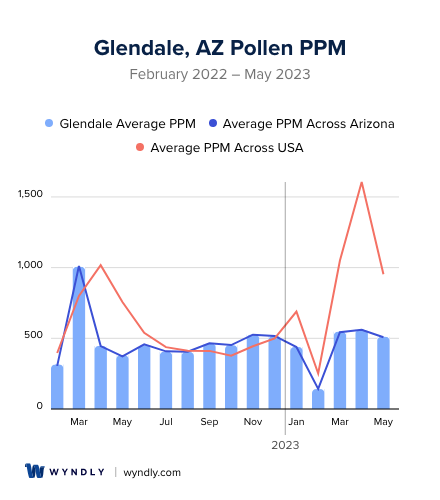
Glendale, AZ Pollen and Allergy Breakdown by Month
Grass
When is grass pollen highest in Glendale, AZ?
May has the highest grass pollen in Glendale, AZ with an average PPM of
When is grass pollen lowest in Glendale, AZ?
December has the lowest grass pollen in Glendale, AZ with an average PPM of
Tree
When is tree pollen highest in Glendale, AZ?
March has the highest tree pollen in Glendale, AZ with an average PPM of
When is tree pollen lowest in Glendale, AZ?
July has the lowest tree pollen in Glendale, AZ with an average PPM of
Weed
When is weed pollen highest in Glendale, AZ?
December has the highest weed pollen in Glendale, AZ with an average PPM of
When is weed pollen lowest in Glendale, AZ?
February has the lowest weed pollen in Glendale, AZ with an average PPM of
Glendale, AZ Pollen Monthly Breakdown by Pollen Type
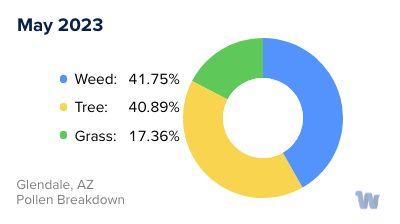
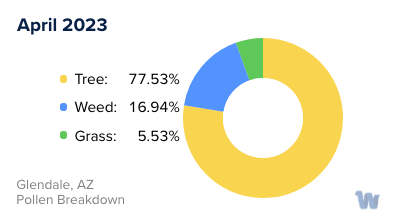
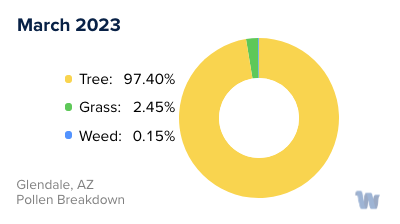

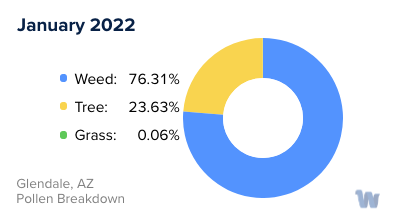
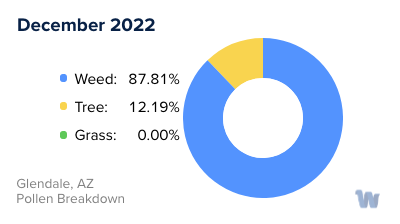
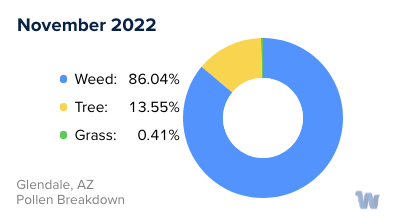
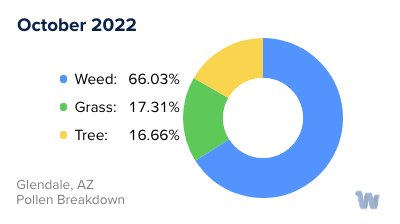
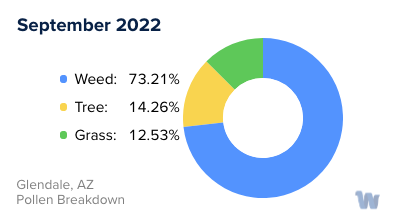
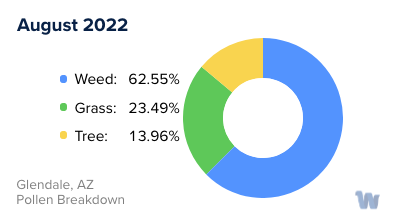

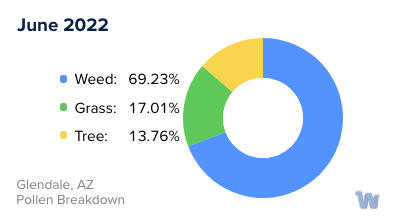
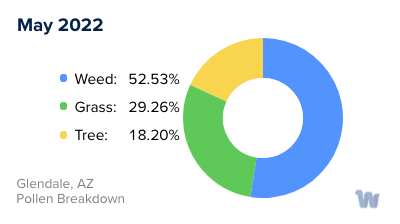
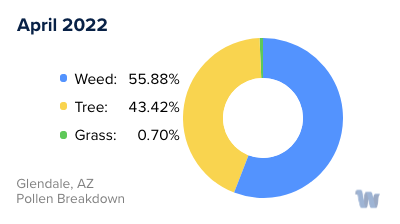
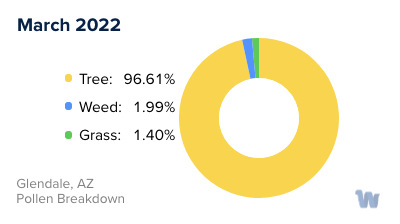
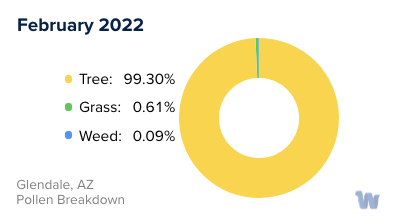
Pollen and Hay Fever in Glendale, AZ
In the sunny city of Glendale, Arizona, pollen allergies, often referred to as hay fever, can be a common nuisance for many residents. In general, the types of pollen causing these allergies vary depending on the season.
Tree pollen is a significant allergen, and in Arizona, residents encounter tree pollen mainly during the winter and spring. Some of the common trees that contribute to this pollen load include Ash, Mesquite, Mulberry, Cottonwood, Oak, and Olive.
Grass pollen, on the other hand, is predominantly produced during the summer months. Bermuda grass, a common grass variety in Arizona, is a significant contributor to the grass pollen count during this season. The density of grass pollen in the air can reach high levels, making summer a challenging time for those with sensitivities to this type of pollen.
Weeds also play a role in pollen allergies. In Arizona, weeds primarily produce pollen in the fall, extending into winter. Ragweed and Russian thistle are among the main culprits.
Seasonal allergies in Arizona typically peak in April, May, and September. During these months, the pollen count can be particularly high. However, due to the state's dry and warm climate, pollen allergies can occur year-round, albeit at lower levels during off-peak times. Therefore, residents and visitors alike should be mindful of the changing pollen landscape throughout the year.
Pollen allergies can be disruptive and uncomfortable, but understanding the types of pollen prevalent in your area and their seasonal patterns can help you anticipate and manage your symptoms effectively.


